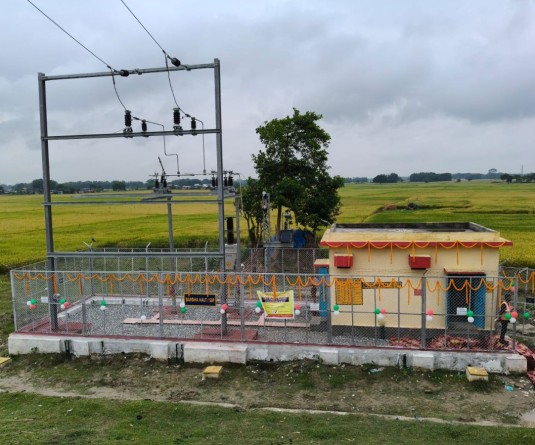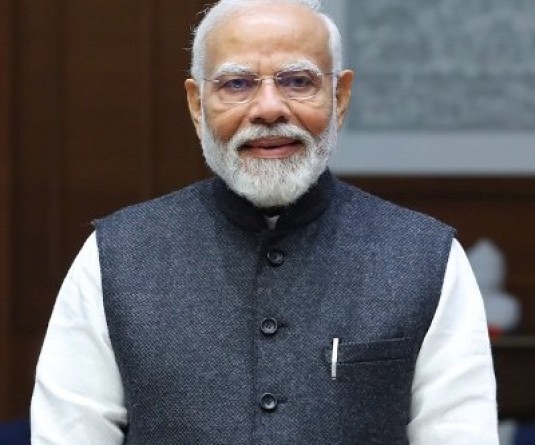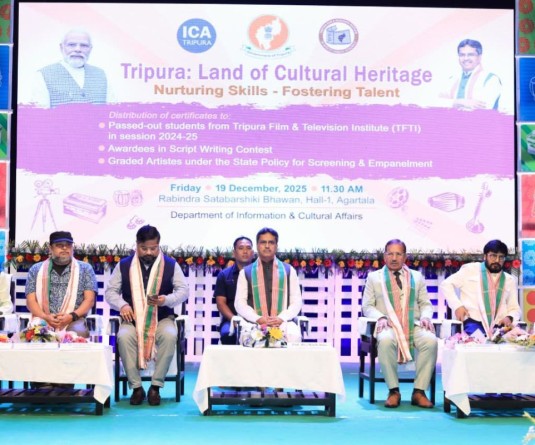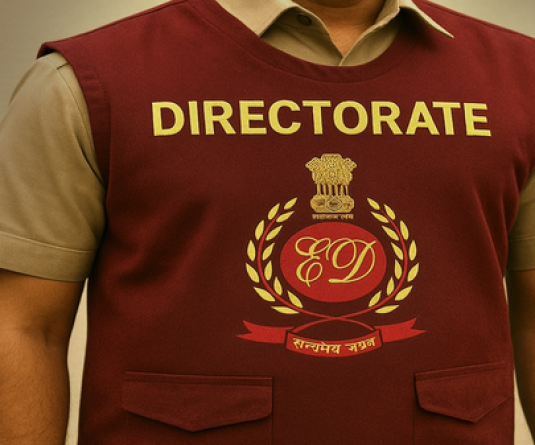IANS Photo

Guwahati, July 30 (IANS) Deep ethnic, subnational, and interpersonal faultlines have long defined the politics of Meghalaya. The Khasis, Jaintias, and Garos are the prominent indigenous communities in the three separate hill regions that make up the state.
Meghalaya, which was carved out of Assam in 1972, contains 24 Assembly seats in the Garo Hills, 29 seats in the Khasi Hills, and seven in the Jaintia Hills. The Khasis and Jaintias share some common cultural traits, but the Garos are linguistically and racially distinct.
Though the Garo region contributes a lesser number of seats than Khasi Hills, it is ironic that the politics in the hilly state have been largely dominated by Garo community leaders.
The present Chief Minister, Conrad Sangma, and his late father, P.A. Sangma are from Garo Hills. Conrad Sangma’s predecessor, Mukul Sangma, belongs to the same community as well.
Recent attack on the Chief Minister's Office in Tura when Conard Sangma was meeting a group of protesters over a demand of making Tura town, the headquarters of Garo region and the winter capital of Meghalaya, is also an example of ethnic division among the communities.
The dominance in the state politics was the bone of contention and the Garo community's organisation wanted to shift the capital from Shillong at least for a substantial time of a year.
Meanwhile, the Jaintia community leaders have also come up with a new demand to make Jowai town as the spring capital of Meghalaya. Even though the state administration has immediately turned down the proposal, the matter may gain pace at any time soon.
Conard Sangma knows very well that Khasis have a reservation against him since he belongs to the Garo community. When this year’s assembly polls were happening, there was a call to install a Khasi Chief Minister this time.
When Conrad Sangma’s NPP emerged as a single party after the February Assembly election and staked claim to the government formation, the capital Shillong descended into familiar turmoil.
Following an arson, Khasi nationalist organisations burned effigies and expressed threats of further bloodshed.
Two MLAs from the Hill State People's Democratic Party, who had offered support to the National People's Party after the Assembly elections had produced a splintered mandate, became the target of their mockery.
The names of the Hill State People's Democratic Party also appeared in the letter that Sangma submitted to the Governor, making a claim to form the government with the support of the Bharatiya Janata Party and an independent MLA.
The two MLAs, Methodius Dkhar and Shakliar Warjri, backing the Sangma’s NPP, enraged Khasi ethnonationalist organisations, who believed this act prevented the state from having a chief minister from the community.
Even though the Meghalaya state Assembly rejected the proposal in 2014, the Hill State People's Democratic Party and the Garo Hills state movement committee intensified their demands two years ago for the demarcation of the boundaries for the proposed Khasi-Jaintia and Garoland states.
Some sections of both the Khasi and Garo communities even believe that the bifurcation of Meghalaya into two states, one for the Khasi-Jaintia communities and one for the Garos, will essentially wipe out the tension among the ethnic communities.
However, the bifurcation of a small state like Meghalaya is a very complex phenomenon and this fact keeps the different ethnic groups together, but faultlines that run deeper in the state often come out in the open.






